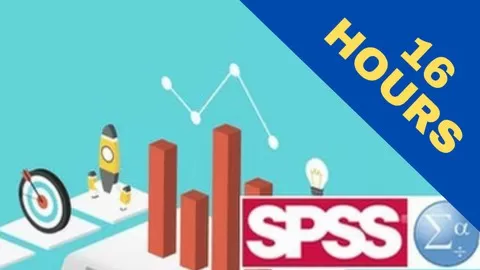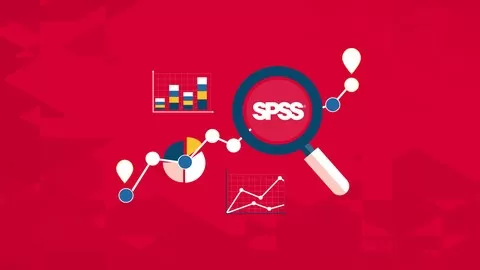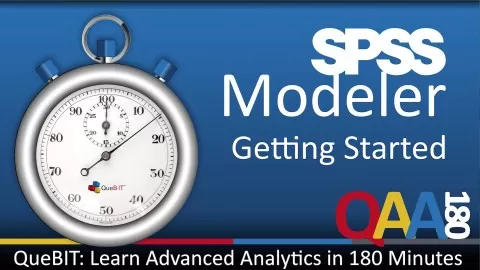Even after completing 8 years of college and taking 6-7 stats classes, conducting analyses and reporting results is without a doubt the most dreadful aspect of research for graduate students and many early career professionals. Are you wondering whether (or how) to check for normally distributed data? Can you use some help understanding how to interpret the amount of variance that is explained by your model and what to do with that information relative to your results? Are you wondering how to even set up your SPSS data file and checking for missing or outlying data before running your analyses?
Most of these skills (and many others that you will need for your graduate-level research) are not taught in classrooms, so it’s no wonder that so many graduate students struggle when it comes to the very important task of properly analyzing and reporting their research data. That’s why we designed this course….to fill those gaps that no one has showed you before.
Your instructor is Dr. Todd Bottom, a veteran researcher for 12 years who has worked in education, pharma research, consulting and dissertation coaching. Specific to this course, Todd also taught psychology classes at DePaul University in Chicago, including undergraduate statistics.
In this 16-hour extensive and comprehensive course on using SPSS, you will learn much more than simply what to click to run your analyses. Not only do we use a full data set with over 200 participants and 100 variables, the content runs from a basic understanding for newbies to understanding and reporting complex analyses such as cluster analysis and repeated measures ANOVA.
The course was designed to progress from a beginner level to gaining more advanced skills for those who are ready to conduct just about any analysis appropriate for doctoral-level work. For easy navigation in our systematic and comprehensive approach, the Modules and Lectures guide students through each of the program’s menu functions in the order that they are presented within the program’s platform.
The course was also designed to integrate a real classroom feel by offering lectures that are 30 minutes or longer. So you don’t have to scroll through dozens of 6-minute lessons to finally get to the information you need…simply start the lecture and get all of your information in one comprehensive lesson. It is a great approach that lets students work through all aspects of an analysis from variable selection to interpreting and writing results.
We also include several quizzes after the modules to test your knowledge, and several homework assignments which allow students opportunities to use their newly gained skills in a practical manner. This course is the perfect solution to learning, conducting and reporting data analysis for nearly any student or researcher. This includes….
•If you are new to SPSS, the early modules will be a great learning resource as you learn the basics such as how to get a free trial of SPSS, how to properly import your data from an Excel file, how set up your complete variable information, and organizing a winning data file to eliminate a lot of wasted time later.
•If you are somewhat familiar with SPSS but don’t have a lot of experience, this course will guide you through the most important aspects of completely and accurately running your analyses, whether you’re conducting t-tests, regressions, ANOVAs, or more sophisticated analyses such as cluster analysis or factor analysis. Along the way you will learn the differences between several types of (for example) regressions and t-tests, when to use a repeated measures analysis, and whether your data meet appropriate assumptions such as normal distribution of data.
•If you have been familiar with SPSS for some time, the course will give you the benefit of having lifetime access that you can return to months or years later as a refresher. Have you ever learned information that you needed to know for just a short time and then forgotten much of it? When you purchase this course, you will never need to hunt down your old colleagues for help or to relearn everything needed to run statistical analyses because you will always have access to this library of step-by-step instructions and interpretations.
As for conducting statistical analyses, this course covers:
•Running descriptive statistics and interpreting outputs for crosstabs, frequencies, means and standard deviations.
•Conducting, interpreting and writing reliability analysis with Cronbach’s alpha
•Two types of correlation analyses including bivariate and partial correlations.
•Statistical tests to compare means with three different t-tests including one-samples, independent samples, and paired samples.
•Conducting and interpreting outputs for three predictive (regression) analyses including linear regression, binary logistic regression, and multiple (stepwise) regression.
•Four types of general linear modeling with ANOVA including one-way, univariate, multivariate, and repeated measures.
•Conduct three types of classification analyses with K-means cluster analysis, hierarchical cluster analysis, and ROC curves.
•Conducting, interpreting and reporting factor analysis with principal components analysis.
•Analyzing and imputing missing data (and why this may not be a good idea for your study).
But this course is so much more than a step-by-step guide and simply clicking where needed to spit out results. You will also learn….
•How and why to reverse score items as required.
•The extreme importance of completely and properly setting up your variables before analysis.
•Multiple ways to sum items for subscales and full measures, and the differences between the approaches.
•How to check for outliers and extreme scores, and suggestions for handling them.
•The differences between four types of missing data, and why they must be handled in different manners.
•Recommendations for handling different types of missing data.
•How to identify and report the amount of variance explained for several types of analyses.
For analyses that we run we discuss, the lectures also cover….
•Multiple ways of checking normality of data.
•Meeting assumptions such as multicollinearity and homogeneity of data.
•Interpreting the outputs.
•Writing results in APA format.
******************************************************
Praise for Todd’s coaching and consulting…
Todd, you are amazing! I appreciate your editing services! The 1st line on my AQR review is “congrats for a strong 1st submission”. I actually had no dings on my grammar etc. (Doctoral Candidate, Arizona)
Todd surpasses all expectations! He has a wealth of knowledge and skill, provides high-quality professional products and is an absolute pleasure to work with. (Nonprofit Consultant, New York)
I highly recommend Dr. Bottom. He is innovative in his approach to solving problems, strategic, highly analytic and persistent. Thanks Todd. (University Research Director, Atlanta)
Todd is a passionate and thorough consultant who came through for LCL when it counted most. He provided a comprehensive report that helped to strategically guide the organization through a critical transition period. (Nonprofit Owner, Chicago)












